Applying the same markup across your product line ignores demand elasticity and customer behavior. Since pricing is internally driven (not reactive to competitors), businesses using cost-plus are less likely to undercut each other or spiral into damaging price wars. Retailers often use simplified cost-plus pricing for everyday products. For instance, Walmart may apply a flat 50% markup on certain product categories, especially private-label goods.
Understanding why customers leave, using data and insights, is the first step to retaining them. Experiment and optimize your pricing to secure the largest customer base. Conversion automation is a crucial aspect of modern business strategies. Let’s break down this formula and see how it works with some examples. Level up your product marketing career & network with product marketing experts. This figure is your compass, guiding you toward profitability by revealing the bare minimum you need to charge to break even.
Why Cost-Based Pricing Appeals to Value-Focused Customers
This site is protected by reCAPTCHA Enterprise and the Google Privacy Policy and Terms of Service apply. By submitting this form, I agree that the Terms of Service and Privacy Notice will govern the use of services I receive and personal data I provide respectively. PandaDoc is not a law firm, or a substitute for an attorney or law firm. Should you have legal questions on the validity of e-signatures or digital signatures and the enforceability thereof, please consult with an attorney or law firm.
Price increases justification
Unlike other pricing strategies that respond to the market, cost-plus pricing is entirely inward-looking. You base the price on your internal cost structure, not on customer perception or competitor actions. In this post, we’ll break down the cost-plus pricing formula, look at real-world examples, and discuss when this strategy makes sense and when it doesn’t. You’ll learn how to apply cost-plus pricing is it effectively and whether it truly aligns with your business goals or if it’s time to explore smarter alternatives.
- For example, use activity-based costing to assign overhead based on actual usage.
- This approach allows them to remain competitive while ensuring a steady profit margin, which helps in long-term financial planning.
- You determine the total cost of producing a product or service, then add a standard markup.
Markup Amount
Even though companies consider demand and profit, production costs remain the primary determinant. Perhaps the biggest drawback of markup pricing is that it disregards what customers are actually willing to pay. You might price an item at $50 based on your costs, but if customers only see $30 in value, it won’t sell. Think of it like building a product “from the inside out.” You start with a solid understanding of what it costs to produce, then layer your profit margin on top to arrive at a final selling price. Sales volume is projected before pricing the product, and sometimes this estimate is inaccurate.
In the long run, marginal and average costs (as for cost-plus) tend to converge, reducing the difference between the two strategies. Using value-based pricing, organizations must identify the benefits a product or service offers to a customer. The necessary components to calculate your selling price with cost-plus pricing are your costs and your desired profit margin.
- Even if consumers buy your product, there could still be a better price for revenue optimization and price differentiation.
- If the company has various products, difficulties arise when determining what the overhead will be for each.
- Cost plus pricing is pretty straightforward to use compared to other pricing methods.
- In this section, we will discuss some best practices and tips for applying cost-plus pricing to your products or services.
- The basic idea behind cost plus pricing is to base your prices on the cost of production plus your desired profit margin.
He’s been involved in tech since 2011 at various outlets and is on an ongoing hunt to build the easiest to use home media system. When not writing about the latest devices, you are more than welcome to discuss board games or disc golf with him. He also handles all the Connections coverage on Tom’s Guide and has been playing the addictive NYT game since it released. If you purchase a product or register for an account through a link on our site, we may receive compensation.
Step 4: Calculate the Final Price
When customers are in the market for a product, they will often compare prices across multiple vendors. Without consideration of competitors’ prices, there is a good chance you are charging way too much or way too little. While the former will leave you with no customers, the latter will be robbing you of higher profits and the cash flow needed to expand. In this article, we will look at cost plus pricing, the rationale behind cost plus pricing, how to calculate a cost plus pricing price, and the pros and cons of cost plus pricing.
The HubSpot Customer Platform
Indirect costs, on the other hand, require a more nuanced approach. These include expenses that are not directly linked to production but are necessary for the overall operation, such as utilities, rent, and administrative salaries. Allocating these costs accurately ensures that the pricing model reflects the true cost of doing business. For example, a company might allocate a portion of its monthly electricity bill to the cost of producing each unit of product. At the heart of cost-plus pricing lies the concept of accurately determining the total cost of production.
This strategy is based on thesimple ‘value-adding’ concept, cost of the raw material plus the value youadded to make it a complete product. Although the company can adjust the percentage markup, the selling price ultimately depends on its cost structure. The first advantage of cost-plus pricing is that it is simple and straightforward. The company does not require customer surveys when setting sale prices. Perhaps a more complicated process is in allocating consistent overhead in calculating the prices of some products.
Even if consumers buy your product, there could still be a better price for revenue optimization and price differentiation. In this article, we’ll look at cost-plus pricing to understand how it is used for specific business types. We will also discuss why we don’t think this is the right pricing method for SaaS. Disney Plus has only existed since 2019, but has seen nearly annual price hikes since its release. At launch, the service cost $6.99, half of the standard price for Netflix at the time.
Implement flexible pricing models that allow you to adjust prices as costs change. A marketing consultancy calculates its project costs based on the hours worked by its consultants and adds a standard profit margin. Service-based businesses, such as consulting firms, use cost-plus pricing to account for variable labor costs.
However, it is not a one-size-fits-all solution and it requires some careful planning and analysis. By following the best practices and tips discussed in this section, you can implement cost-plus pricing successfully and achieve your goals. However, what customers care aboutis the value of the product contrasting with the price. If the product isadding more value to their lives, then they would happily pay for it regardlessof its costs. If the product isn’t adding any values, then they’ll be reluctantto pay even a less price. Thispricing strategy is very simple to use if you know all the basic costs, factoryoverhead and the percentage of profit margin.
Disney is betting that its rich catalog of Marvel, Star Wars, Pixar and National Geographic titles will justify the higher costs. Using marginal cost pricing, the store would sell these shirts for just a little more than the cost of the hangers. So if it costs the store $2 more to sell one extra shirt, they might sell the shirt for $5. Using target costing, you would figure out how to build the app so it costs you less than $5 per month.



